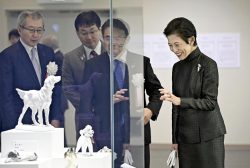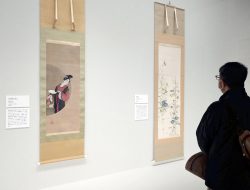Simple, Elegant Beauty of ‘Kusakizome’ Soothes; Artist Specializes in Technique for Dyeing with Plant-Made Dyes
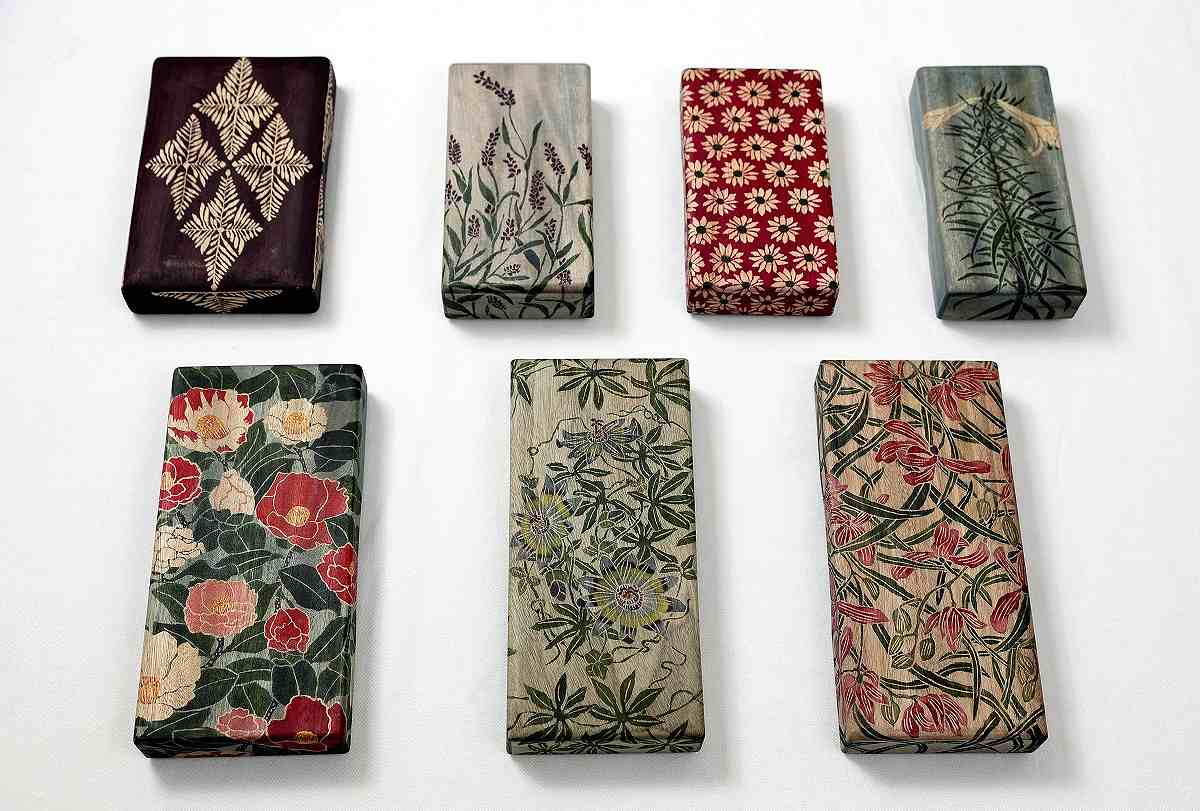
Wooden boxes with designs of camellias, passionflowers, lilies and other flowers and grasses
11:35 JST, September 8, 2024
The flowers and plants depicted on the many wooden boxes are created using the roketsu kusakizome technique — dyeing with natural dyes made from plants — and they are characterized by their simple beauty. Such dyes lend a distinctly graceful appearance that is soothing to look at.
Lilies, passionflowers, camellias and cymbidiums — the painted flowers and plants are supple and elegant.
They are the work of roketsu kusakizome artist Reiko Nomura, 75. The boxes are made of camphor wood, and when a lid is opened, the wood’s fragrance gently spreads.
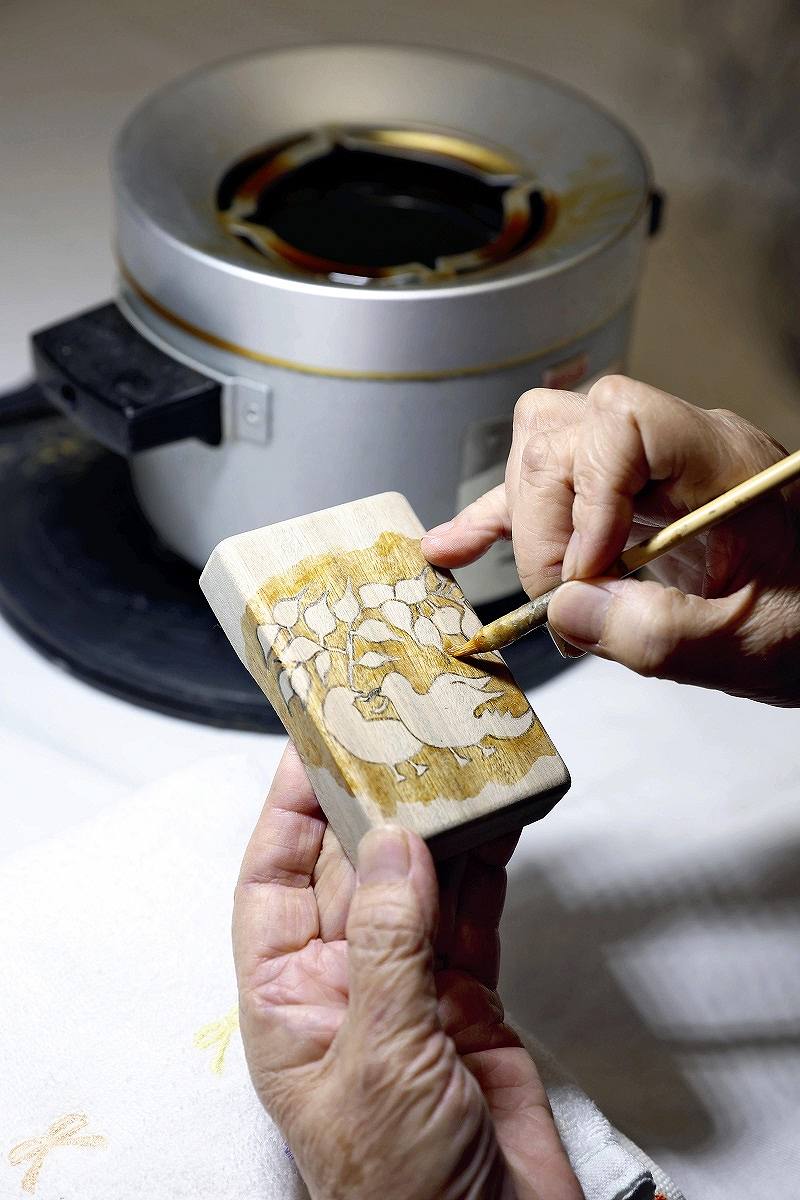
Wax is melted in a special pot and then dabbed onto the wood to prevent the dye from bleeding.
These pieces were made using the traditional method of applying melted wax to the uncolored areas before dyeing.
Nomura repeats this process many times for some of the pieces. She mainly chooses wildflowers as the motifs for her works, using dyes extracted from plants and trees.
“I like to think of designs by picking up plants that are close at hand,” Nomura said.
Using about five colors of dyes, she layers the colors and adds shading with water. She varies the colors with mordant solutions such as tin and aluminum. For example, when using green, she combines turmeric and aluminum mordant to make a yellowish color, which she applies over indigo to express the motif.
“I’m sometimes moved by the colors produced by chance,” Nomura said.
She dries the wax thoroughly and wipes it off with benzine when the coloring is complete. It is an exciting moment to see if the pattern and the color that she wants are going to come out, she said.
A final coat of wax is applied to complete the process. The more the dyed boxes are used, the more subdued the colors become, which is one of the charms of dyes derived from nature.
Most of the boxes Nomura dyes are handmade from camphor wood by craftspeople.
“The smooth surface of the wood is essential for creating works because it makes the colors so vivid,” she said.
The fresh and relaxing aroma is also a feature of the boxes.
“The scent is pleasant, and the warmth of the wood feels nice when I hold it in my hands,” Nomura said. “The charm of the camphor tree has also been a big reason why I can continue creating works for a long time.”
Traditional patterns
Nomura has created many works using wildflowers as motifs. In recent years, she has been painting more traditional patterns. When she held an exhibition in Kyoto, she visited places such as art museums and felt attracted to a variety of patterns, she said.
The box with the “tatewaku” pattern, in which two curved lines spread out, then contract and extend vertically, is vividly colored. The diamond-shaped fern pattern gives it a modern feeling and is said to connote prosperity for one’s offspring.
She also uses Japanese-style patterns, such as one with bamboo grass leaves and a drawstring pouch, and a pattern with a thread nipper and a needle pad. In addition, she is increasingly depicting small animals such as birds and cats, further expanding her creative range.
-
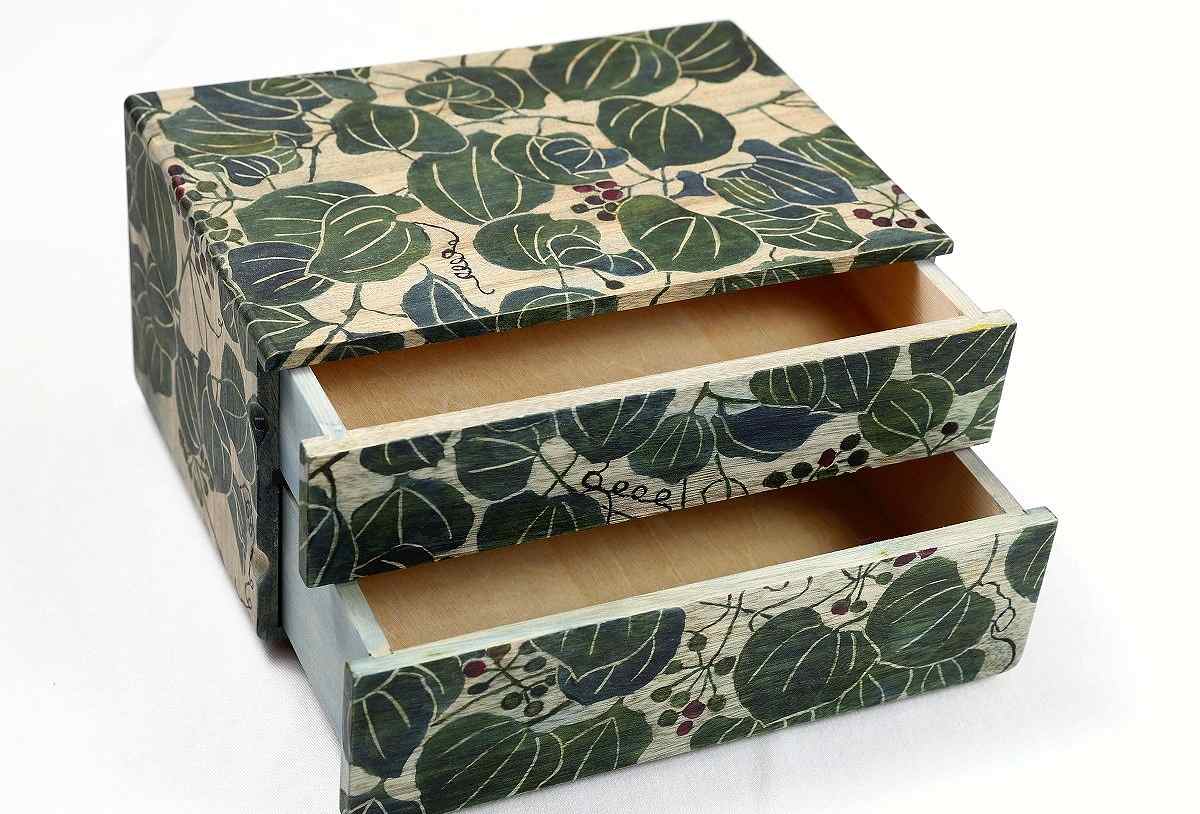
The Yomiuri Shimbun
A small chest with a catbrier motif -
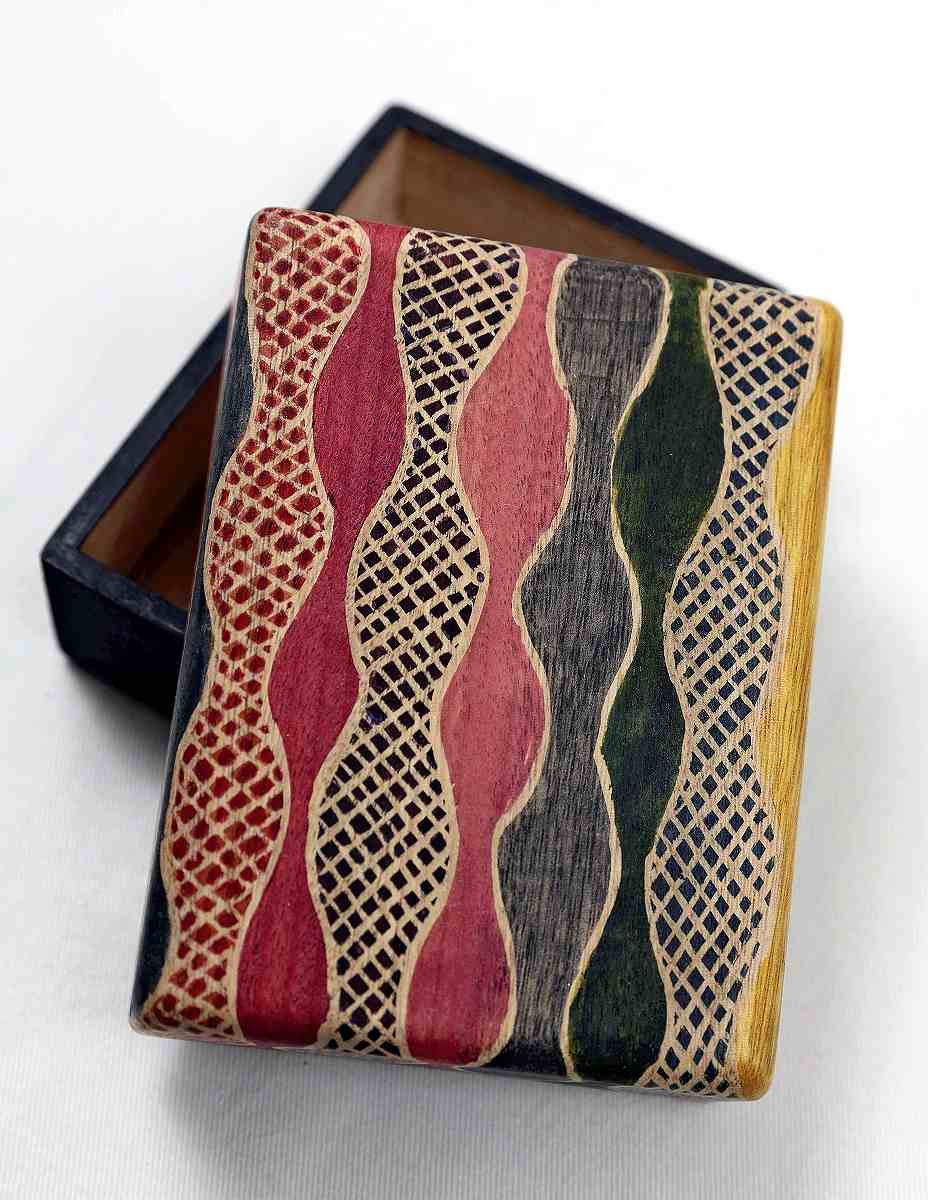
The Yomiuri Shimbun
A box with the “tatewaku” pattern -

The Yomiuri Shimbun
Designs drawn on pieces of tracing paper
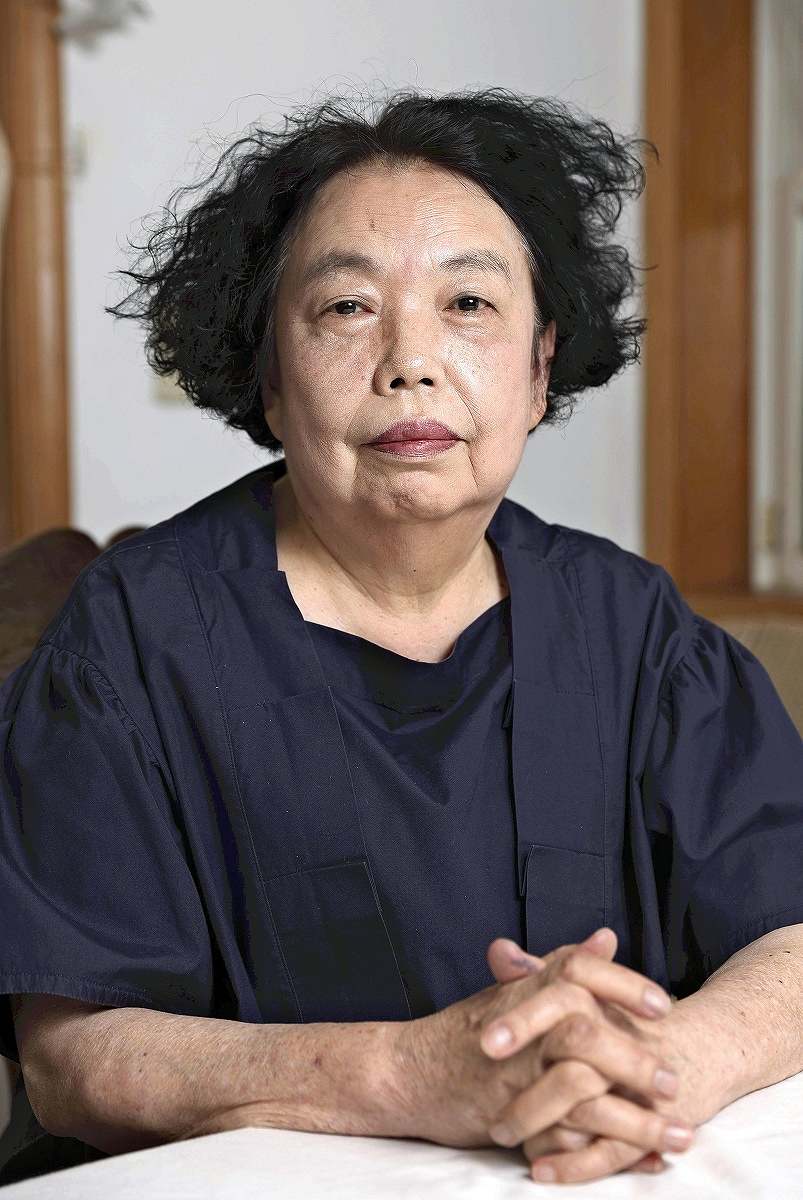
Reiko Nomura
Born in Tokyo in 1948, Nomura was attracted to the art form by a magazine article about works made using the kusakizome technique. She began studying plant dyes about 40 years ago at a culture school. Since becoming independent, she has held exhibitions nationwide.
"Culture" POPULAR ARTICLE
-
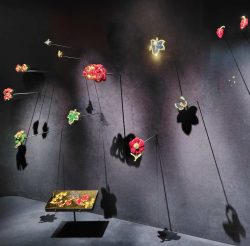
Van Cleef & Arpels Dazzles with Art Deco Artisanry at Tokyo Exhibit
-

Disney’s ‘Twisted-Wonderland’ Animated Series Puts Villains in Spotlight: New Show Features School Inspired by Classic Disney Films
-

Ayumi Hamasaki’s Shanghai Concert Canceled Day Before Schedule as Part of Beijing Backlash
-

‘The World Masterpiece Theater Series’ Celebrates 50 Years; Animator Looks Back on Creating Anime Classics
-

Popularity of Piggy Banks Across Time and Place Seen at Bank’s Museum of Money Boxes in Hyogo Pref.
JN ACCESS RANKING
-

Tokyo Economic Security Forum to Hold Inaugural Meeting Amid Tense Global Environment
-

Keidanren Chairman Yoshinobu Tsutsui Visits Kashiwazaki-Kariwa Nuclear Power Plant; Inspects New Emergency Safety System
-

Imports of Rare Earths from China Facing Delays, May Be Caused by Deterioration of Japan-China Relations
-

University of Tokyo Professor Discusses Japanese Economic Security in Interview Ahead of Forum
-

Japan Pulls out of Vietnam Nuclear Project, Complicating Hanoi’s Power Plans



